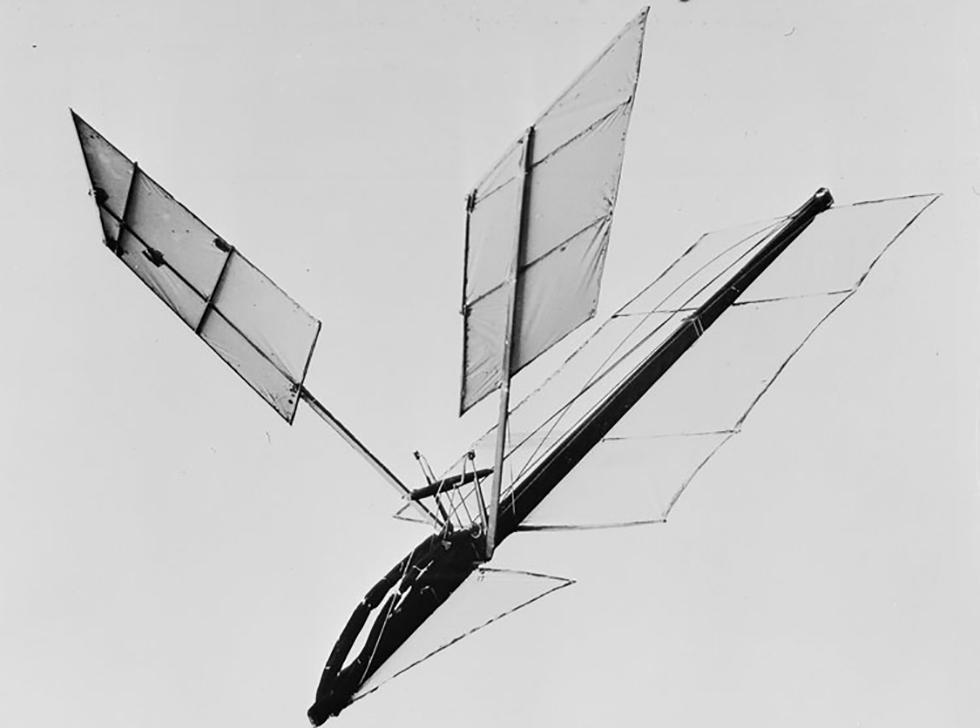


About this record
This is a model of an ornithopter (a machine that flies by flapping its wings). It is powered by a rotary engine using compressed air. The model was designed by Lawrence Hargrave in about 1889.
Educational value
- Is an example of the work of Lawrence Hargrave (1850–1915) – born in England, Hargrave migrated to Australia in 1872 and became one of the world's most significant aviation pioneers; extraordinarily generous with his discoveries and never seeking to take out any patents on his inventions, he influenced a number of Europeans and the American Wright brothers, who went on to invent the first heavier-than-air flying machines
- Illustrates Hargrave's early thinking on the development of a flying machine – Hargrave initially experimented extensively with monoplanes (planes with only one pair of wings) and carefully studied the flight of birds, before developing this machine with flapping wings; however, when he realised that this would not work well, he moved on to invent and experiment with the box or cellular kite, with which, in 1894, he was able to lift himself five metres in the air
- Shows one of the first flying models to use Hargrave's newly invented radial rotary engine, which revolutionised engine technology and was used in military aircraft for many years
- Shows that the wings of this machine had slightly curved surfaces – this was a step towards Hargrave's discovery in the early 1890s that curved surfaces provide up to twice as much lift as flat surfaces, which led to the development of the aerofoil
- Is similar to a model that was depicted, along with a portrait of Lawrence Hargrave, on the Australian $20 note of the first decimal currency series (issued 1966–94)
- May be an image of one of only 25 of Hargrave's working models still in existence – his entire collection of 176 models was housed in the Deutsches Technological Museum in Munich at the time of World War II, when they were mostly destroyed by Allied aerial bombing.
Acknowledgments
Learning resource text © Education Services Australia Limited and the National Archives of Australia 2010.
Related themes
Need help with your research?
Learn how to interpret primary sources, use our collection and more.


